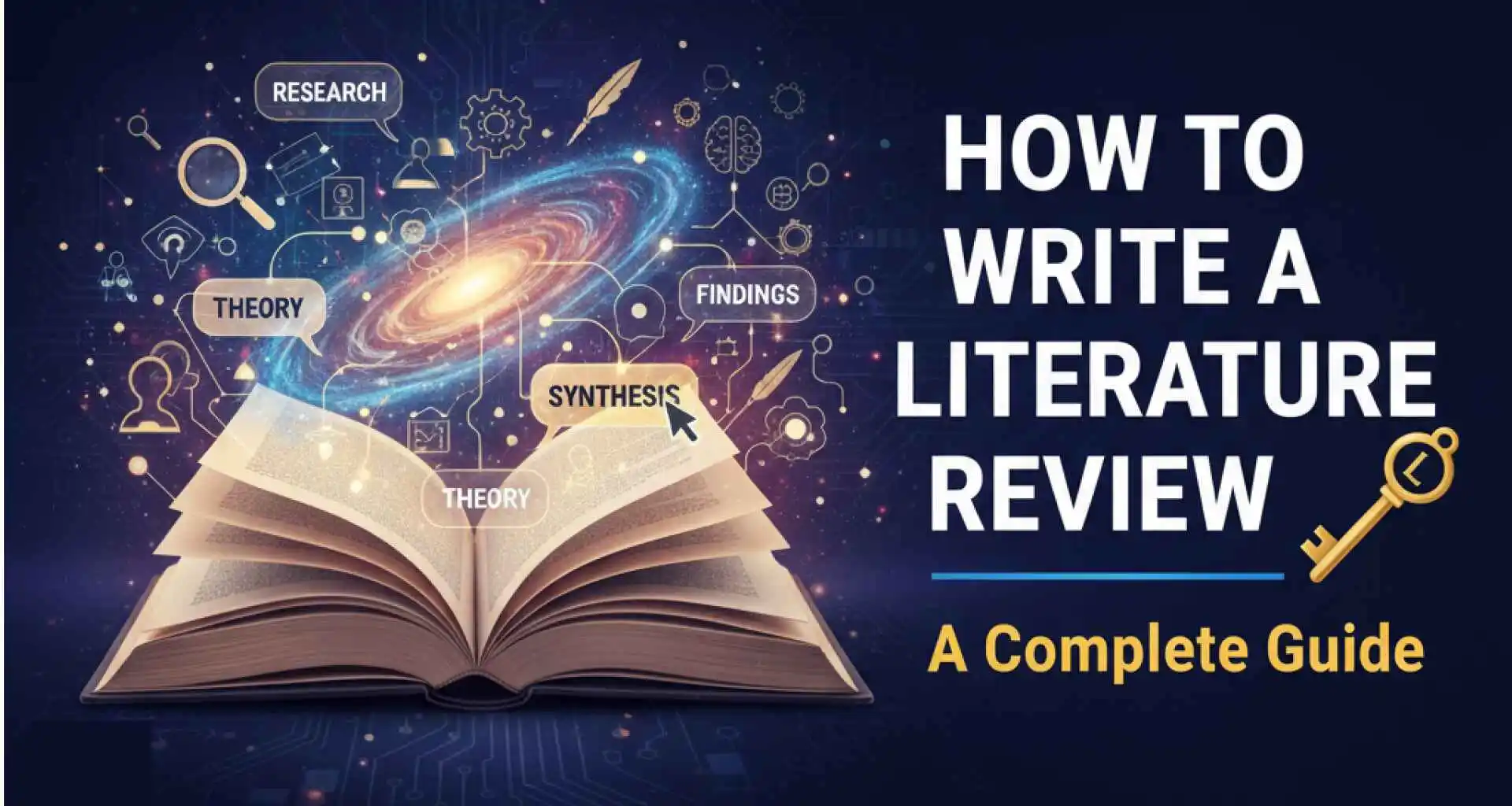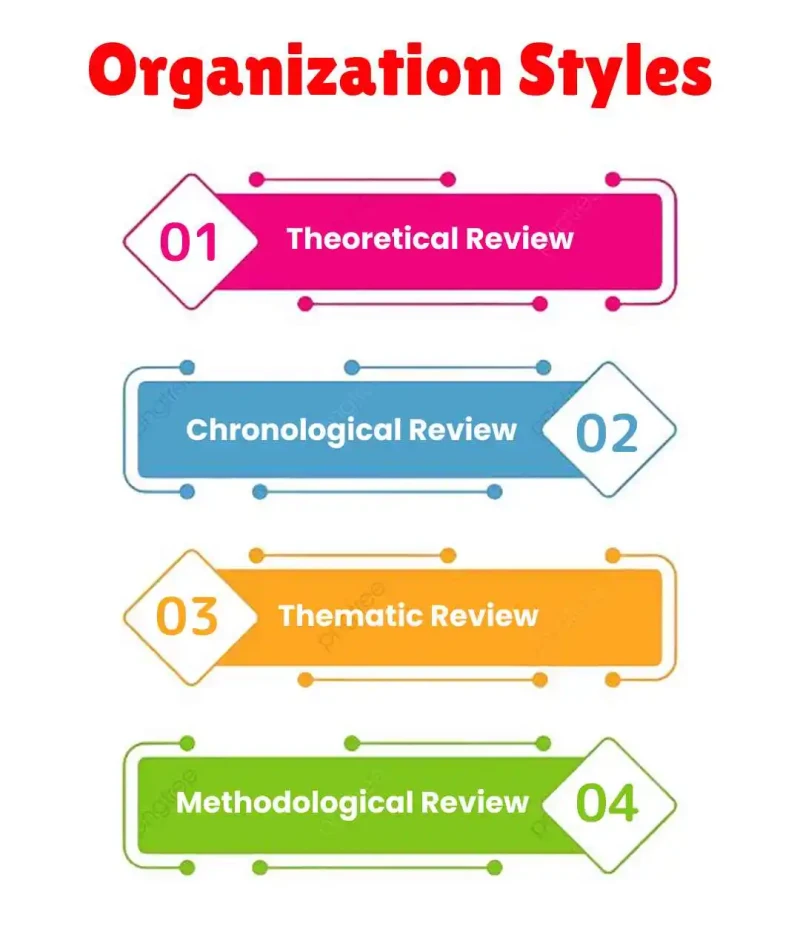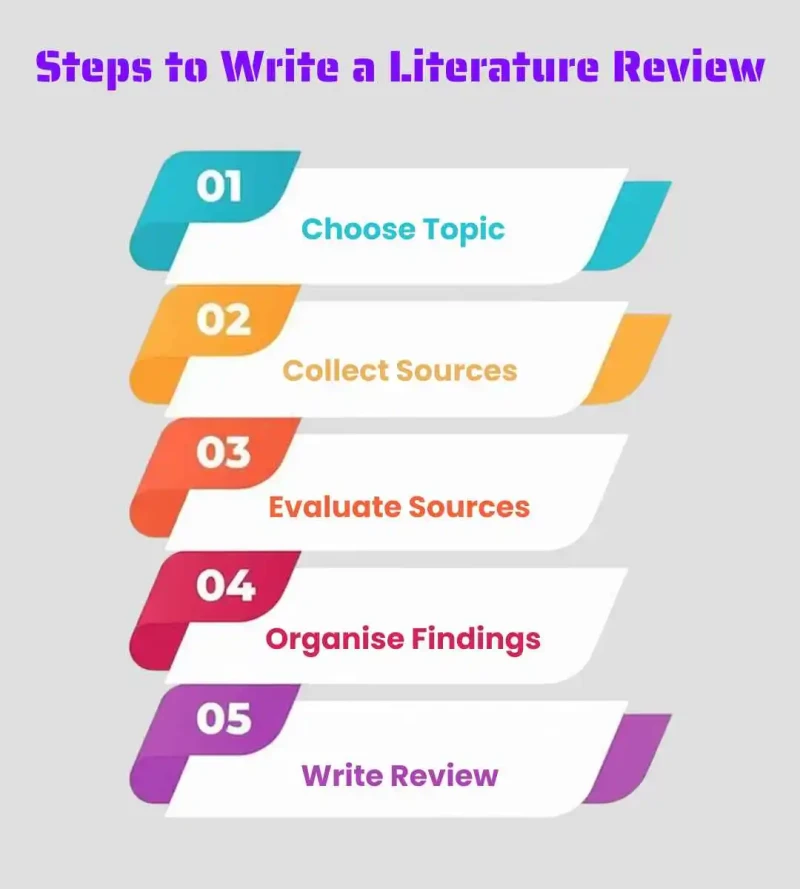
Santra
If you are starting to write a literature review, the first step can feel daunting. You may struggle with questions like, “How do I even begin my literature review?” or “What sources should I include?” These challenges are common, and feeling unsure at this stage is completely normal for every researcher embarking on their academic journey.
This blog will guide you step by step on how to write a literature review, providing essential resources to help you create a review that is organised, insightful, and authentically your own.
At its core, a literature review is a thoughtful evaluation of the research that has already been done on your topic. By examining theories, methods, and findings closely, you can identify trends, debates, and knowledge gaps. For many new researchers, this step is crucial to ensure their work is grounded and purposeful rather than starting in the dark.
In a dissertation, thesis, or research paper, a strong literature review does more than organise information. It frames your study, justifies your research questions, and shows readers that you understand the broader field. It also helps you avoid repeating past work and builds confidence that your research is making a meaningful contribution to the conversation.
Unlike a literature survey, which simply lists previous studies, a literature review connects, analyses, and interprets them. It weaves the research into a coherent story that guides your study, giving your work direction, depth, and insight.
A literature review is designed to critically examine existing research and scholarship within a discipline. In a thesis or research project, writing a literature review helps identify gaps, build context, and establish a strong foundation for your study. This process ensures your work remains credible, well-informed, and contributes meaningfully to academic knowledge.
Identifying gaps and opportunities for further investigation.
Understanding fundamental theories, frameworks, and methodologies.
Avoiding duplication of previous studies.
Recognising prevailing trends and ongoing debates in the discipline.
Strengthening the conceptual framework for research questions.
It is an imperative step towards creating a clear, ordered, and useful piece of a dissertation, thesis, or research paper. Through a literature review, you can position your research within the larger scholarly discussion, critique current studies, and locate research gaps that your work can address.
Adhering to a literature review format ensures your review proceeds in a logical sequence, which is more accessible to readers and helps them understand the knowledge progression in your area of study. It also offers a format for critically appraising sources and combining findings, which enhances the quality of your research.
In formatting the literature review, the first crucial step is structuring it effectively, ensuring that your research narrative is presented with clarity and flows logically from one idea to the next.
A typical literature review consists of three main sections:
Articulating the Topic: The introduction must accurately specify your research area and delineate boundaries. A properly selected topic avoids making your review too broad and untargeted. For example, rather than looking into "climate change," a more targeted focus would be "the effect of climate change on agricultural productivity in South Asia."
Referring to the Purpose: This section describes why reading previous research is important. Highlight how previous research guides your research and declares the necessity of your study. By following an established literature review format, your introduction can briefly set the context of the study, justify the research question, and highlight its relevance.
The literature body condenses and synthesises available studies. Information may be categorised according to themes, time sequence, or methodology, depending on the review form. Critically examining the literature enables one to observe trends, inconsistencies, and research deficiencies.
For instance, while most research in educational technology is centred on primary schools, your review could note that few studies have been conducted in higher education environments. This serves to illustrate the originality of your study.
The conclusion summarises the key findings, stresses their importance, and directly connects them to your research aims. A great conclusion makes readers realise how your review informs your study and its contribution to the discipline. The next crucial step is determining how to organise your literature review effectively to present your research narrative with clarity and flow.

The format of a literature review can be structured using different organisational styles depending on the research goal. The most common approaches are theoretical, chronological, thematic, and methodological, each offering a distinct way to present and analyse academic sources.
A theoretical review emphasises theories, models, and conceptual frameworks that underpin the research topic. It is used in conceptual or abstract studies to compare perspectives, trace how theories evolved, and highlight gaps in existing scholarship.
A chronological review organises studies by their publication timeline, showing how understanding of a subject has progressed over the years or decades. This structure is ideal for mapping historical developments, identifying turning points, and analysing changes in academic thought.
A thematic review groups research according to recurring ideas, topics, or themes rather than time. It is especially effective in interdisciplinary research, as it helps reveal patterns, contradictions, and gaps across different areas contributing to the subject.
A methodological review examines and compares the research methods used in studies. It highlights strengths, weaknesses, and appropriateness of various approaches, helping researchers justify their chosen methodology and refine their design for stronger and more credible results.
Accurate citation and referencing are essential for any literature review. Using formats like APA, MLA, or Chicago ensures consistency and credibility. Properly referencing sources prevents plagiarism, strengthens academic integrity, and demonstrates respect for prior scholarship. Tools like Zotero, Mendeley, and EndNote simplify tracking and generating bibliographies.

Writing a literature review becomes manageable when approached step by step. Each stage from selecting a topic to drafting—helps you stay focused, organised, and critical. Following these steps ensures your review is systematic, clear, and academically valuable.
Start by selecting a focused research question or topic that aligns with your study. Define boundaries to ensure you include only relevant literature, avoiding unrelated materials that may weaken the clarity and impact of your review.
Conduct a comprehensive search of books, journal articles, and credible databases. Use tools like Google Scholar, Scopus, Web of Science, or JSTOR to gather materials. Reference managers such as Zotero or Mendeley make tracking sources easier.
Critically assess each study’s relevance, quality, and credibility. Look for recurring themes, contradictions, or unexplored areas. Identifying research gaps requires comparing findings across sources and noticing where research questions remain unanswered or underexplored.
Arrange your findings logically using theoretical, chronological, thematic, or methodological approaches. This organisation highlights key insights, connects ideas, and helps readers easily follow your arguments while understanding the progression of knowledge within your chosen field.
Draft your review with clarity, coherence, and balanced analysis. Focus on interpretation rather than description. Revise carefully for structure, flow, and accurate references to produce a polished, professional, and credible literature review.
A strong literature review requires planning, organisation, and critical thinking, and it helps you build a solid academic foundation for your research journey.
Failing to consider sufficient studies undermines your review. This is corrected by widening database searches, employing diverse keywords, and using multiple databases for comprehensive coverage.
Omitting seminal works diminishes credibility. Cross-reference citations in central studies and check reference lists of leading articles to verify you’ve included critical contributions.
Poor structure misleads readers. Improve it by logically categorising studies by thematic, chronological, or methodological organisation and employing clear headings and subheadings.
Plagiarising text reduces originality. Instead, aim to analyse, compare, and synthesise studies to provide a novel and critical overview.
Employing mixed styles of citation appears amateurish. Adopt one form of referencing (APA, MLA, or Chicago) throughout your review.
Simply abstract summarising is not enough. Make your review more substantial by speaking to the assessment, methods, and conclusions to provide depth and critical analysis.
Using only older material outdated your review. Stay relevant by covering the last five years of scholarship while matching classic studies with context.
Neglecting to ground your research makes the purpose less effective. Always tie back reviewed research with your primary question or goals to ensure focus and relevance.
Even after avoiding these mistakes, some researchers find their literature review rejected, leaving them frustrated. In such cases, consider expert support through trusted PhD assistance services or professional literature review writers who can refine, restructure, and strengthen your work for successful submission.
Avoiding common mistakes in your literature review, like weak organisation, plagiarism, or ignoring key sources, strengthens your research foundation. Apply these strategies patiently for the best results. If challenges persist, seeking the right expert guidance can help refine your work and ensure it meets academic standards with confidence.